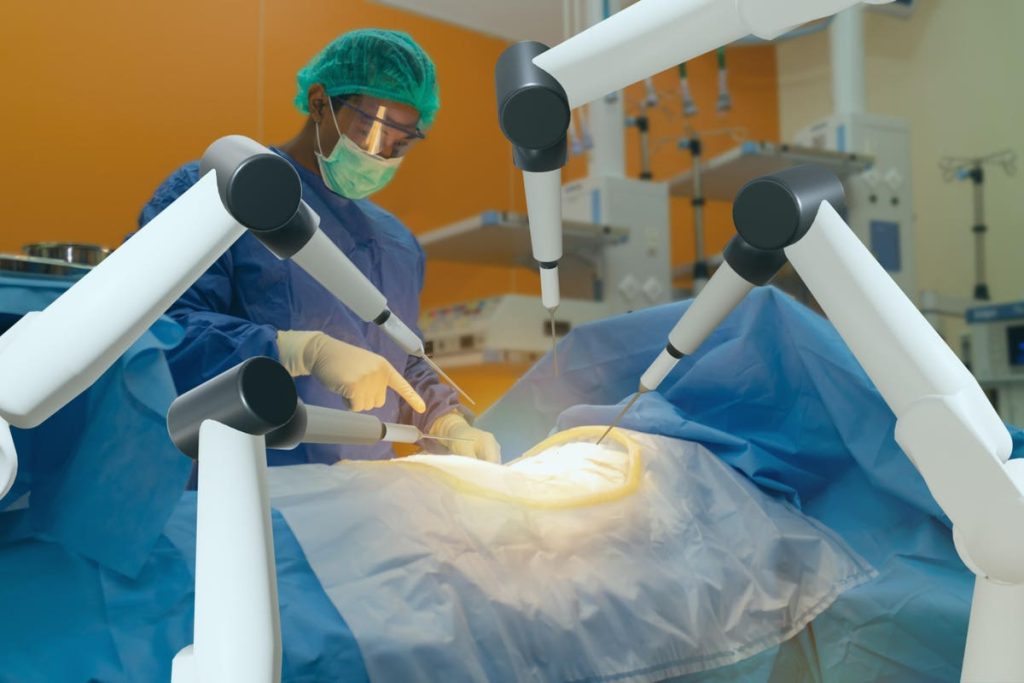This story is part of a series on the current progression in Regenerative Medicine. This piece discusses advances in the use of artificial intelligence in medical robotics.
In 1999, I defined regenerative medicine as the collection of interventions that restore to normal function tissues and organs that have been damaged by disease, injured by trauma, or worn by time. I include a full spectrum of chemical, gene, and protein-based medicines, cell-based therapies, and biomechanical interventions that achieve that goal.
Autonomous medical robots may be conducting full medical operations sooner rather than later. In a previous article for the regenerative medicine series, I discussed the oncoming proliferation of artificial intelligence-assisted medical robots in our healthcare system. One such example of these robots in use is during surgical procedures. I discussed the semi-autonomous Da Vinci robot system, which aids physicians during complicated procedures, but more recently, a new fully autonomous robotic surgery has emerged.
In an article for Science, Dr. Alan Kuntz and colleagues from the University of Utah and elsewhere describe a new autonomous medical robot that can steer a needle through live tissue. More precisely, the system was shown to acutely navigate a pig lung without causing damage, steering the needle to a specified target location. This could be the first of many such robots in the near future. Here, I discuss Kuntz and colleagues’ needle-steering robot and the implications it may have on the future of regenerative medicine.
As our understanding of medicine and surgical procedures advances, so too does the difficulty and intricacy of surgery itself. What was once a practice concurrently conducted in barbershops is now one of the most difficult professions in the workforce. Some surgical procedures require immense precision, and the slightest misstep could result in the death of a patient.
Herein lies the use case for robotics in surgery settings. If the involuntary hand movements of even the most seasoned surgeon could be removed, so could the risk of injury to the patient.
While semi-autonomous robots are typical, if not common, in today’s healthcare system, Kuntz and colleagues designed medical to fill the void of fully autonomous robot surgeons. Specifically, needle-guiding systems driven by fully autonomous robots had not yet been achieved.
Their robotic system makes use of a laser-patterned, highly flexible steerable needle. Whereas most needles are rigid and inflexible, this needle is ideal for traversing curved paths typical in surgical settings to reduce the risk of damage to nearby tissue.
The robot uses three methods to remain fully autonomous and avoid causing damage to nearby tissue: replanning, control, and safe insertion time windows.
Replanning is the real-time adjustment of the preinstalled surgical plan based on the patient’s anatomy or other unexpected events during surgery. Control is the ability of the robot to control its movements without the intervention of a surgeon, allowing the robot to adjust course based on the previous replanning step. Safe insertion time windows are the phases of the patient’s breathing cycle in which needles can be safely inserted and moved, which the robot constantly monitors simultaneously.
In a lung biopsy test on the organ of a pig, the autonomous system achieved targeting errors less than the radius of clinically relevant lung nodules, meaning in a live human patient, no notable damage would have been caused to the lung tissues. Additionally, Kuntz and colleagues found that their robotic system was more accurate than standard manual bronchoscopy techniques, suggesting that autonomous robots may prove more effective at such intricate procedures than humans.
The benefits of autonomous medical robots for intricate procedures are obvious. Increased accuracy will enable far less user error in surgical settings, and robots will likely complete the procedure far quicker, saving the hospital, the doctor, and the patient valuable time.
There are, however, drawbacks as well to the introduction of these procedures to our healthcare system. First and foremost is a robotic malfunction. No machine ever built has been without flaw, whether a coding mistake or regular wear and tear over time. At some point, one of these machines will malfunction during an operation, likely causing significant complications for the patient.
Another concern of note is cost. These robots will not be cheap; in a hospital setting, it is safe to assume some of that cost will be passed onto the patient. While those who can afford it could benefit from the implementation of these systems, for those without quality health insurance, these procedures will be out of reach financially for many years.
Ultimately, however, I see great promise in the introduction of autonomous medical robots in surgical settings. This is the future we are headed towards, so we should ensure that these systems are of the highest quality when they arrive in our hospitals.
To read more of this series, please visit www.williamhaseltine.com
Read the full article here








